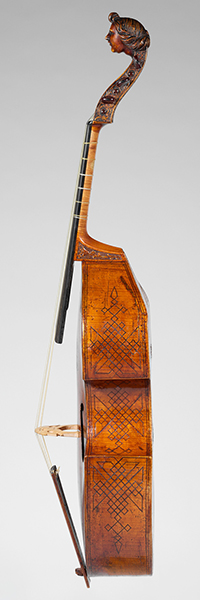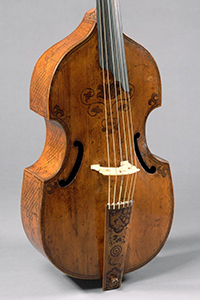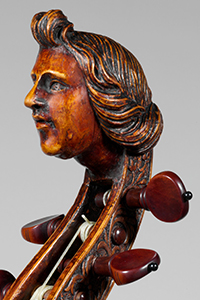The viola da gamba (literally the “leg viola,” as it was held between or on the legs, as opposed to the viola da braccio, or “arm viola”), appeared in Europe at the end of the 15th century. In renaissance music it was especially popular as a consort instrument: ensembles of different-sized viols playing all the different parts, from treble to bass. By the 18th century, the bass viol or basse de violebecame a favoured solo instrument in Germany, England, and especially in France.
The viol is lightly constructed, the front gently arched and the back flat, sloping at the top to meet the neck. Many old viols are beautifully decorated, with scrolls carved in the likeness of important personnages. The neck is fretted (like a lute or guitar), and the instrument has six or seven strings. The bow is held in an underhand grip, unlike the usual overhand grip of the violin and cello, resulting in a different sort of articulation. The player’s middle finger rests on the hair, so can adjust the pressure as he or she plays.
The sound of the instrument is intimate and expressive. The frets and number of strings make it more suited to playing chords (several notes at once) than its violin family cousins. These qualities led to a rich and varied solo repertoire. It was also prized as a continuo instrument in chamber ensembles.
Hear the viola da gamba performed by virtuoso Vitterio Ghielmi in Dreaming Jupiter from February 6–9, 2020. MORE INFO BUY TICKETS
Images: Public domain courtesy of The Met Museum.
Instrument: labeled Richard Meares (British, London 1647–1725 London), c. 1680, English.
Click on the images to view larger




